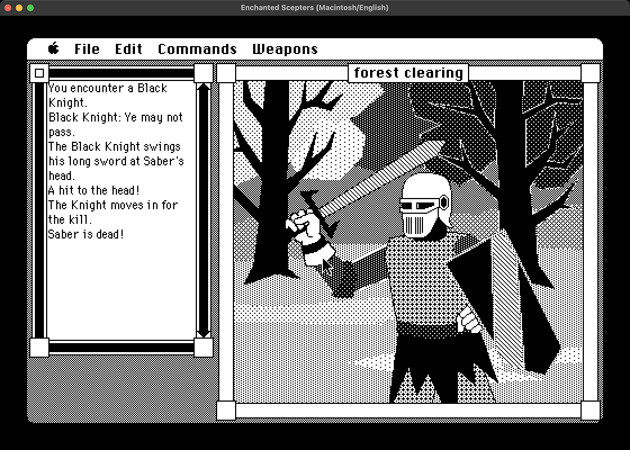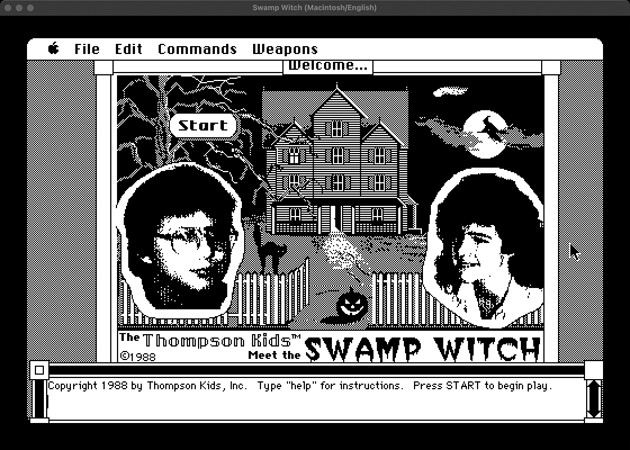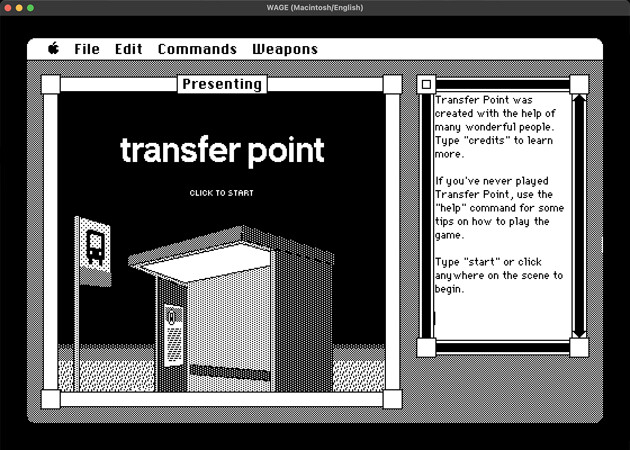ScummVM is currently testing World Builder support
ScummVM recently announced that their World Builder engine, WAGE (short for “World Adventure Game Engine”), is ready for testing. This is exciting, as these Mac-only games have not been very accessible in recent years, and this will make them much easier to play. Previously, playing World Builder games required either an old Mac, or an emulator like Mini vMac, which can be difficult to set up. Some web sites like Infinite Mac make this easier, but then you’re limited to playing in a web browser.
About ScummVM
If you’re not familiar with ScummVM, it’s a program that allows you to play many adventure and role-playing games on modern computers and other devices. For example, you can play a game originally designed for DOS or Windows 95 in Windows 11 without any compatibility concerns. Better yet, it will run just as well on a Mac, in Linux, or even on an iPad. ScummVM accomplishes this not with emulation (which can be slow and complex) but by completely recreating the game engines of the games it supports. Their site details some of the games you can play with it:
ScummVM supports an extensive library of over 325 adventure games, including classic titles from iconic studios such as LucasArts, Sierra On-Line, Revolution Software, Cyan, Inc. and Westwood Studios. Alongside groundbreaking games like the Monkey Island series, Broken Sword, Myst, Blade Runner and numerous well-known titles, you can experience truly obscure adventures and discover hidden gems.
In some cases, ScummVM is even used for commercial re-releases of older games, ready to run on modern computers. Many of the good old games on GOG are packaged this way, like Riven: The Sequel to Myst. (The page even notes “This game is powered by ScummVM.”)
About World Builder
If you’re not familiar with World Builder, I give an introduction to it in my Enchanted Scepters series and go through the process of making a game in my extensive World Builder series. But here’s the short version: when the original Macintosh was released in 1984, William C. Appleton set out to make an adventure game for it. At the time there were not many programming tools available for the Mac, as most early software was written on an Apple Lisa. So in order to make Enchanted Scepters, one of the first point-and-click adventure games, he created World Builder, the first multimedia authoring tool. When Silicon Beach Software published World Builder in 1986, it made game authoring accessible to anyone with a Mac, even those without any programming experience.
Hundreds of games were made with World Builder in the following years, ranging from amateur, silly games to polished, commercial games with detailed art and sound effects sprawling across multiple disks. (One of my favorites is Swamp Witch, which lies somewhere in the middle.) Because World Builder was so approachable, it enabled this broad range of experiences, with games that were often a bit weird or experimental.
A few authors, notably Ray Dunakin and Louise Hope, stuck with it long enough to make several games each, and push the limits of what World Builder could do. Dunakin even went on to create new documentation that was included with the public domain release of World Builder 1.2 in 1995.
You can learn more about World Builder in The Secret History of Mac Gaming by Richard Moss. It’s a wonderful book.
My Experiences with World Builder
I was about eleven when I first got my hands on Enchanted Scepters and World Builder. I wasn’t able to complete the game back then, and most of my time with the tool was spent making the sample game the manual guides you through (“Midnight Snack”). I loved it though, and it was the first of several approachable authoring tools that sparked my joy of making software.
A couple of years ago, for MARCHintosh, I thought it would be fun to go back to World Builder and spend a few weeks making a game live on Twitch. I ended up spending well over a year making Transfer Point (release date to be determined) with the help of my viewers.
I had already worked out a plan to make Transfer Point playable in a web browser, but ScummVM support will greatly increase options for playing the game. I’ve tested it in ScummVM already, and I was able to play it through to the end. I have a list of bugs I’ll be filing reports on, but overall the WAGE engine seems to work pretty well.
Try It Yourself
If you’d like to try some World Builder games in ScummVM, you’ll currently need a daily build since this engine is not included in release versions yet. Keep in mind this means some games may not quite work the way they’re supposed to right now. You’ll also need a game to play. ScummVM has helpfully supplied a huge download of 160 games made with World Builder, since many were released as freeware or shareware. If you’re not sure where to start, try Ray’s Maze by Ray Dunakin in the “raysmaze” folder, or Swamp Witch by Jim Thompson in the “swampwitch” folder. Don’t forget to report any bugs you find.
If you’re lucky enough to already have some games you’d like to try in ScummVM, you may need the ScummVM Dumper Companion, a handy tool that can convert disk images that use the older Mac HFS format into files you can use with ScummVM. If the game isn’t recognized, you’ll still be able to play it, and you can contact ScummVM to help update their detection list.
Finally, if you happen to share your experiences playing World Builder games on Twitch or YouTube, please let me know on Bluesky or Mastodon! I’d love to watch if I’m able to.


